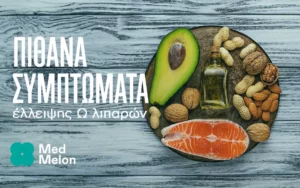Scientific Names of Bedstraw:
Galium aparine L. [Fam. Rubiaceae]
Forms:
Teas and extracts made from the dried above-ground parts of bedstraw.
Traditional Usage:
– Bladder Health Maintenance
– Bronchitis
– Cellular Regeneration
– Cleansing
– Detoxification
– Fever
– Immune System
– Infections
– Inflammation
– Respiratory Health Maintenance
– Skin Infections
– Swollen Glands
– Ulcers
– Urinary Tract Gravel
– Urinary Tract Infection
– Water Retention
Overview:
Bedstraw, Galium aparine L. [Fam. Rubiaceae], also known as galium, cleavers, clivers, and goosegrass, is found in wetlands in Asia, Europe and North and South America. As a soothing relaxant and diuretic, bedstraw is indicated by the German Commission E for treating kidney and gall bladder gravel and urinary tract infection accompanied by fever, water retention and burning or painful urination. Bedstraw is also a folk remedy for acute breathing disorders, bronchitis, skin irritation and inflammation, but its effectiveness in these areas is unproven. The current British Herbal Pharmacopoeia (1990) lists clivers as a diuretic. The British Herb Compendium (1992) lists clivers as a mild diuretic and also indicates the drug’s use for treating psoriasis and other skin diseases; lymphatic adenopathy and topically for burns and abrasions. It is also noted that the iridoid glycosides have shown mild laxative effects in animals and may also account for lymphatic and diuretic effects. Foster and Duke (1990) note that cleavers has traditionally been used as a “blood purifier”, as well as for treating urinary system inflammation and gravel, dropsy, and fevers. The fresh juice of bedstraw was also used for treating scurvy. The herb tea was used internally and externally as a folk remedy against abnormal growths and the juice contains citric acid, which is reported to have activity against abnormal growths. Bedstraw has been shown in studies to have a hypotensive effect (lowers vascular pressure) and also contains the compound, asperuloside, which is anti-inflammatory. It is warned that the juice may cause contact dermatitis. The very young greens are eaten in some places as a potherb. Pojar and MacKinnon note that in Scandinavia, masses of the stems are used as filters for milk. Galium is from gala, Greek for ‘milk’ because the juice of G. verum was used to curdle milk.
Active Ingredients:
Bedstraw contains: Iridoid glucosides, including monotropein, asperuloside, and aucubin; phenolic acids; ca. 0.1% flavonoids as quercetin glycosides including isorutin; also hesperidin; luteolin; ca. 2.5-4% tannins of the condensed type; Gallotannic, citric and rubichloric acids; may contain coumarins (as per other Galium species); n-alkanes; sterols; fatty acids; starch; and other ubiquitous compounds.
Suggested Amount:
May be taken as a tea, juice, or tincture or used externally. For infusion, pour boiling water over 3-4 g of bedstraw, steep 10 minutes, and then stain. As a diuretic drink two to three cups per day. The British Herbal Compendium lists the dosage as: Unless otherwise prescribed, three times daily: dried herb, 2-4g or in infusion; expressed juice, 5-15ml; liquid extract (1:1, 25% ethanol), 2-4ml; tincture (1:5, 25% ethanol), 4-10ml.
Drug Interactions:
None known.
Contraindications:
None known.
Side Effects:
None known.
References:
Bradley PR (ed). 1992. Clivers. In British Herbal Compendium. Volume 1. A Handbook of Scientific Information on Widely Used Plant Drugs. British Herbal Medicine Association, Bournemouth, Dorset, Pp. 61-62.
British Herbal Medicine Association 1990. British Herbal Pharmacopoeia 1990. Publ. by BHMA, PO Box 304, Bournemouth, Dorset, BH7 6JZ. Pp. 32-33.
Foster S, and Duke JA. 1990. Cleavers in Medicinal Plants. Houghton Mifflin Co., New York, NY, p. 36.
Pojar, J. and A. MacKinnon (Eds.) 1994. Plants of Coastal British Columbia, including Washington, Oregon and Alaska. Publ. by Lone Pine Publishing, 202A-1110 Seymour Street, Vancouver, B.C., Canada, V6B 3N3. Pp. 330.
Wichtl M and NG Bisset (eds). 1994. Bedstraw. In Herbal Drugs and Phyto-pharmaceuticals. (English translation by Norman Grainger Bisset). CRC Press, Stuttgart, Pp. 225-227.




